THE ARBIMON NEWSLETTER IS BACK!
Read our newsletter in Spanish, French, Portuguese, or Indonesian.
KICKING OFF 2023
WITH THE ARBIMON TEAM
We’re bringing back the Arbimon newsletter for 2023!
Stay tuned for new features and tools on the platform, what’s coming, up, and some insights into our work in bioacoustic monitoring.
What’s New in Arbimon?
Arbimon Insights is a new visualization tool that translates your raw audio detections to interactive snapshots of key biodiversity metrics for both your overall project (species richness, activity hotspots) and behavioral patterns for particular species of interest.
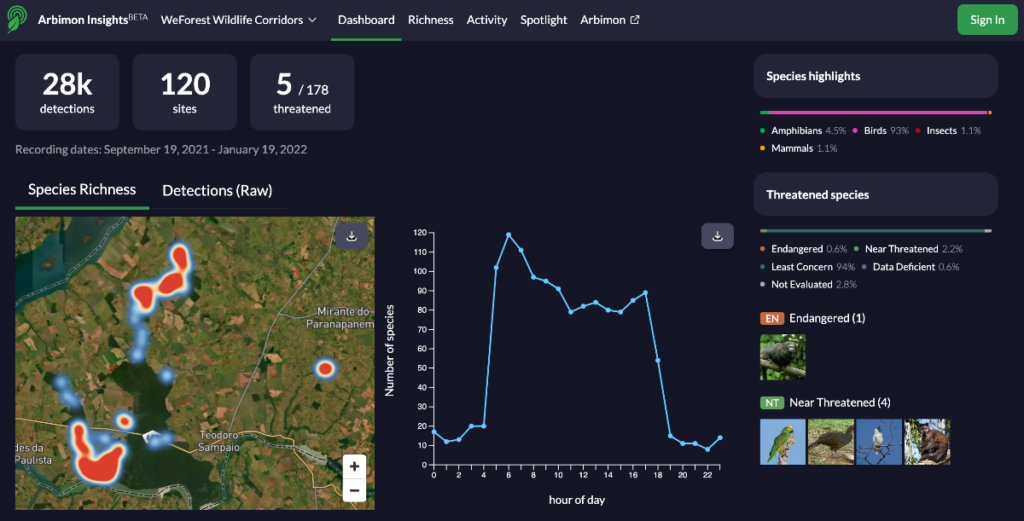
We developed Arbimon Insights to better display and highlight the actionable results of acoustic analyses for conservation practitioners, decision-makers, and local stakeholders. This is a beta tool that we are actively continuing to develop and we welcome user feedback! Tell us what you think here.
Check out our Showcased Projects to explore Insights from:
TIP: You can find our new Insights tool by clicking “Insights” in Arbimon’s navigation bar.

Arbimon has also reached:
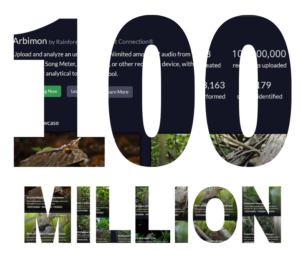
minutes of audio data uploaded! This is equivalent to ~190 years of audio recordings – which would be impossible to efficiently listen to and analyze without Arbimon. Here’s to the next 100 million!
Q: How does Arbimon stay free?
A: Initially developed for our own biodiversity monitoring studies and those of our partners, we quickly realized that Arbimon could have an even greater impact if we made it available to the broader scientific community. We strongly believe that accessibility and knowledge sharing with others are essential to driving effective conservation efforts.
We remain committed to dedicating a portion of the funding we receive from external partners and project collaborators to maintain Arbimon as a free and open platform for anyone to use.
This support helps us to maintain and continuously improve Arbimon’s features, develop new analytical techniques, and curate our biodiversity databases. It also enables us to engage in the development and implementation of conservation projects with a diverse range of external partners, including governmental agencies, NGOs, academic institutions, corporate entities, and local stakeholders.
Interested in partnering with us on an acoustic monitoring project?
We’d love to hear from you! We support partners in data collection, analysis, AI model development, and results interpretation for acoustic monitoring-related conservation projects.
Did you know?
We have an open-access template library that you can use for your own pattern-matching analyses! If you’re struggling to find your target species’ calls in your own recordings, check out our public template library to see if other users have already added one for your species of interest. You can easily add a public template to your own project with just 1-click, and then use it in your own pattern-matching analyses.
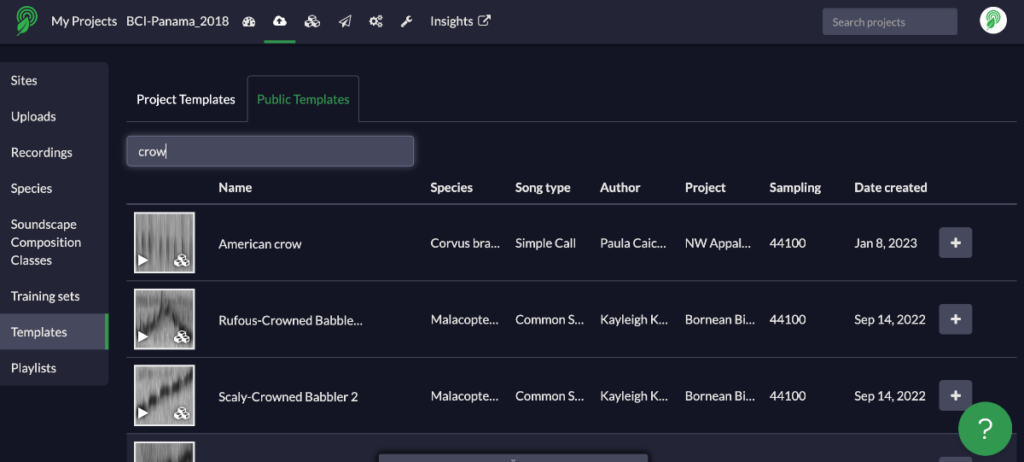
Find a great example of a species’ call that’s not already in the library?
Share it with the rest of the Arbimon community! Open-source templates allow other conservationists to analyze their data faster and encourages collaboration among people working in similar areas.
Featured Project

RFCx has partnered with WeForest and IPÊ to assess and monitor biodiversity in restoration areas over the next 3 years. WeForest has been working with IPÊ since 2014 to restore the Brazilian Atlantic Forest, bring back wildlife, and help communities generate income from protecting the forest. In São Paulo state, they are working to re-connect the Morro do Diabo State Park to surrounding forest fragments. Passive acoustic sensors (Audiomoths) were deployed at each of the sites (shown in red) and the recordings were stored and analyzed in Arbimon.
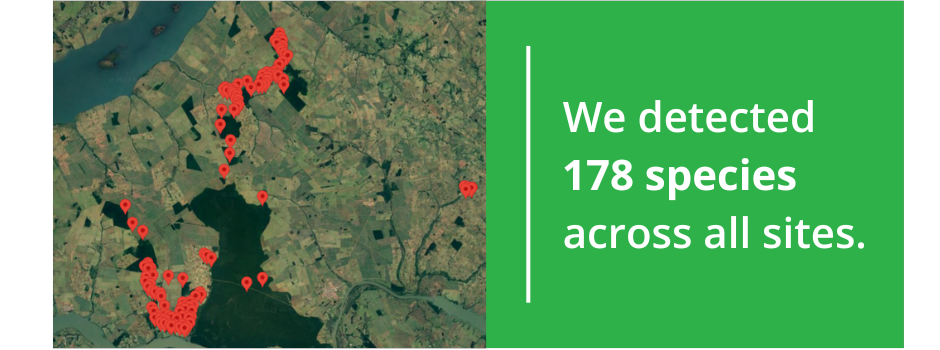
The 178 included threatened species such as Black Lion Tamarins (below) and Bare-throated Bellbirds that are found only in the Atlantic Forest! We’ve found that restoration sites are able to host a similar number of bird species as protected forests.
OUR RESULTS INDICATE: that reforestation sites promote positive effects on biodiversity by increasing available habitat quality and facilitating connectivity between forest fragments.
The oldest restoration site is only 10 years old, which really shows that reforestation can lead to clear results in just a few years! However, restoration and forest sites did have slightly different types of bird species (known as species composition), with forested sites having more large-bodied, fruit-eating species and restoration sites having more generalist species.
Some of the more forest-dependent species, such as the Chestnut-eared araçari and Surucua trogon (pictured below), are still missing from restoration sites. This emphasizes the need to maintain long-term management and monitoring efforts to allow restoration sites to fully transition into reforested areas. These species are particularly important in restoration areas because they act as seed dispersers – natural plant regenerators that accelerate reforestation even more!
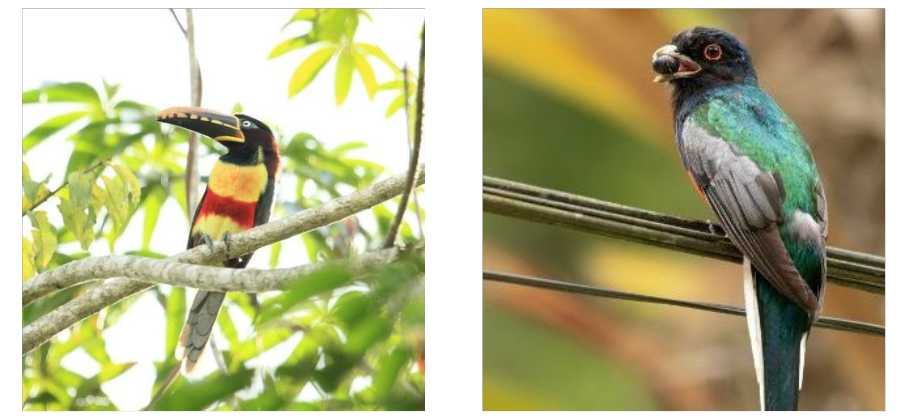
RFCx, WeForest and IPÊ will continue working together over the next few years to continue monitoring changes in species richness and composition across restoration sites.
Stay tuned for more results in the future!
Your feedback is important to us!
As we continue to make improvements and develop new features for Arbimon, you may receive a request from our user research team to be interviewed or beta-test features so we can gain user feedback. If able, your time is much appreciated! Want to give your feedback now? Click the link below and fill out the form to help us better tailor the platform for users like you!
Questions?
Review our extensive support documentation and video tutorials that provide step-by-step guidance. You can also click our help button (green ? icon in the bottom right of the Arbimon platform) for chat support.
Happy monitoring, analyzing, and transforming data into action.
Here’s to a productive and safe 2023!
– The Arbimon Team
Join the Arbimon community for news & announcements, new feature launches, and more exciting updates coming soon. Subscribe

